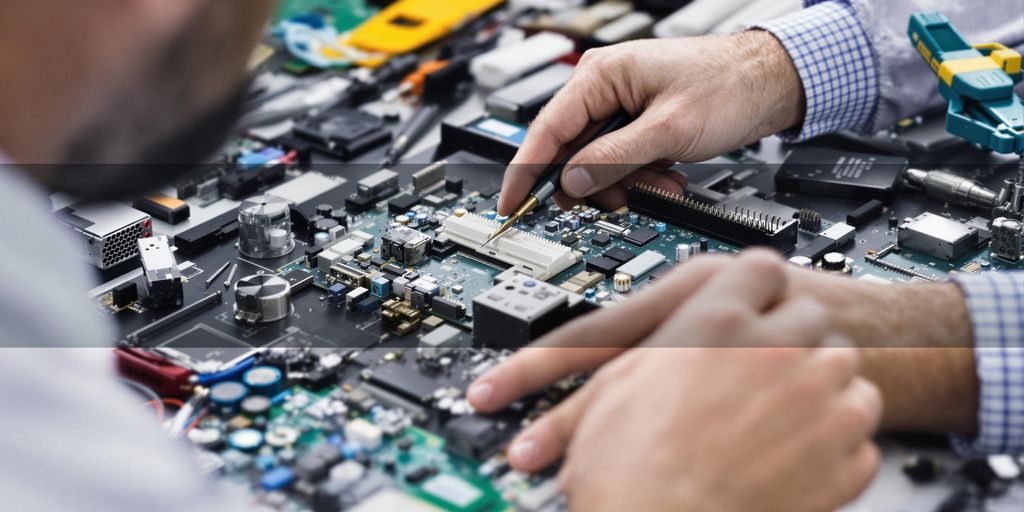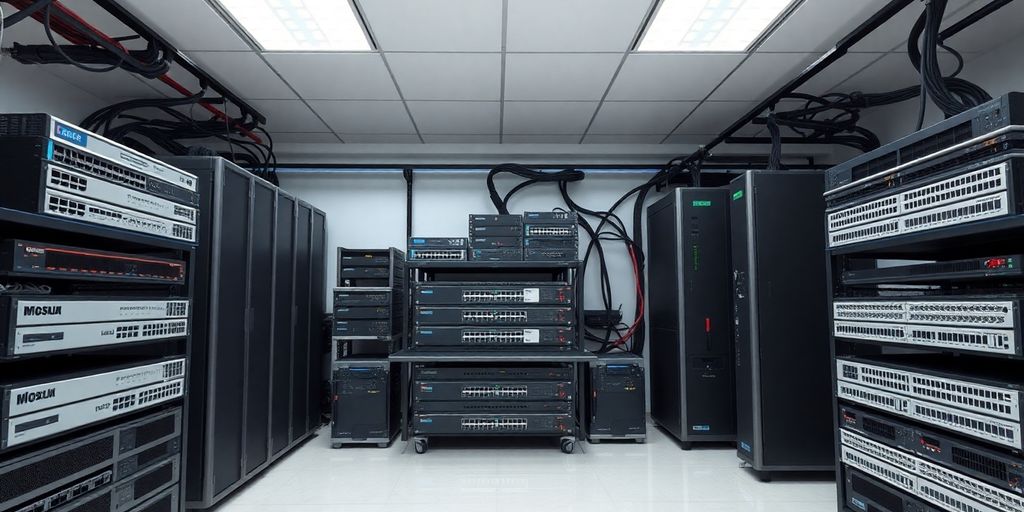Ever wonder why some apps just keep running smoothly while others crash and burn? It’s all about how they’re maintained and repaired. Keeping application software in tip-top shape isn’t just a one-time thing; it’s an ongoing process. This guide will walk you through the best practices for keeping your software running smoothly and efficiently, ensuring it lasts for the long haul.
Key Takeaways
- Regular maintenance is crucial for preventing software issues from becoming major problems.
- Updating and patching software regularly helps keep it secure and efficient.
- User feedback is a goldmine for improving software functionality and user satisfaction.
- Prioritizing bug fixes and enhancements ensures the software remains relevant and reliable.
- Efficient maintenance practices can significantly reduce long-term costs.
Understanding Application Software Maintenance Strategies
Identifying Key Maintenance Activities
Keeping software running smoothly involves a bunch of different tasks. Here’s a quick list of what you might need to tackle:
- Bug Fixing: This one’s a given. Squash those bugs as soon as they pop up to keep users happy.
- Performance Optimization: Speed things up by cleaning up code and tweaking performance settings.
- Feature Updates: Add new features now and then to keep the software fresh and useful.
Establishing a Maintenance Schedule
A maintenance schedule is like a roadmap for your software upkeep. It helps in planning when to do what, ensuring nothing gets left behind. Here’s how you can set it up:
- Assess Needs Regularly: Check what your software needs based on user feedback and technical assessments.
- Prioritize Tasks: Not all tasks are equally important. Decide which ones need immediate attention and which can wait.
- Set Timelines: Assign deadlines to each task to keep things on track.
Evaluating Maintenance Effectiveness
After putting in all that effort, you want to know if it’s paying off, right? Here’s how to measure if your maintenance is actually working:
- User Satisfaction Surveys: Ask users how they feel about the software. Are they experiencing fewer issues?
- Performance Metrics: Look at data like speed and error rates to see if there’s been improvement.
- Cost Analysis: Check if the money spent on maintenance is saving you more in the long run.
Regular maintenance isn’t just about fixing what’s broken; it’s about keeping everything running smoothly and efficiently. This proactive approach not only saves time but also enhances the user experience.
Best Practices for Application Software Repair
Implementing Regular Updates and Patches
Keeping software up-to-date is like giving your car a regular tune-up. Regular updates and patches are essential for maintaining software integrity and security. They help fix bugs, close security loopholes, and improve the overall functionality of the application. Establishing a routine update schedule ensures that your software remains compatible with other systems and devices, reducing the risk of unexpected breakdowns.
Prioritizing Bug Fixes and Enhancements
Not all bugs are created equal. Some can be ignored for a while, while others need immediate attention. Prioritizing these fixes is crucial. Start by identifying which bugs have the biggest impact on user experience or system performance. Address these first to maintain a smooth and reliable application. Enhancements, on the other hand, should focus on improving user satisfaction and adding value to the software.
Incorporating User Feedback for Improvements
Feedback from users is a goldmine for making meaningful improvements. Users often encounter issues or suggest enhancements that developers might overlook. By actively incorporating this feedback, you can fine-tune the software to better meet user needs. This not only improves the application but also strengthens the relationship with your users, as they feel heard and valued.
Consistently engaging with users and addressing their concerns can transform a good software application into a great one. It’s about creating a product that not only works well but also resonates with those who use it daily.
Optimizing Performance Through Maintenance
Performance Monitoring Techniques
Keeping tabs on how your software is doing is like checking your car’s dashboard. It’s not just about spotting issues but understanding the overall health of the application. Performance monitoring is crucial; it involves setting up tools to track how much memory your app is using, how fast it responds, and where it might be lagging. Think of it like having a watchful eye on your software’s heartbeat. Tools like application performance monitoring (APM) software can help you get this done efficiently, ensuring you catch any hiccups before they become full-blown problems.
Database Tuning Strategies
Databases are the backbone of most applications. If they’re slow, everything else feels like it’s dragging through mud. Database tuning is all about making sure your database is running as smoothly as possible. This means indexing tables properly, optimizing queries, and ensuring that data retrieval is lightning-fast. These tweaks can make a world of difference, especially when your app is juggling a ton of data. Regular checks and adjustments help keep things running smoothly.
Code Optimization Practices
Just like a cluttered room can slow you down, messy code can bog down your software. Code optimization is about cleaning up your codebase to make it more efficient. This might involve refactoring code to remove redundancies, streamlining logic, or even rewriting parts of it for better performance. It’s like spring cleaning for your code. Not only does this help with speed, but it also makes future maintenance a breeze. Regular code reviews and updates ensure that your software doesn’t just work, but works well.
Performance maintenance isn’t just a one-time task; it’s an ongoing commitment to keeping your software running smoothly and efficiently. By focusing on these areas, you can ensure your application stays fast and reliable, giving users the experience they expect.
Managing Costs in Application Maintenance
Streamlining Maintenance Processes
Managing costs in application maintenance often feels like a juggling act. It’s about finding the right balance between spending and saving. Streamlining maintenance processes is one way to keep costs in check. By clearly defining roles and responsibilities, you can ensure that everyone knows what they should be doing, which cuts down on wasted time and resources. Regularly updating documentation and prioritizing tasks based on urgency and importance are key strategies. This not only helps in reducing costs but also ensures smoother operations.
Budgeting for Software Upkeep
Creating a budget for software maintenance is crucial. You need to account for various expenses such as hosting servers, developer fees, and software licenses. Here’s a simple breakdown:
- Hosting Servers: Cost varies from $70 to $350 per month depending on your app’s needs.
- Developer Fees: Hiring a developer might cost around $23 per hour.
- Software Licenses: Include both free and paid options for necessary tools.
By planning these costs ahead of time, you can avoid unexpected financial surprises.
Evaluating Outsourcing Options
Sometimes, outsourcing maintenance tasks can be a cost-effective solution. Evaluate your options carefully:
- Assess the Expertise: Ensure the outsourcing partner has the necessary skills.
- Compare Costs: Weigh the cost of outsourcing against in-house maintenance.
- Consider Communication: Choose partners who can communicate effectively with your team.
Outsourcing can save money, but it’s important to choose the right partner to avoid potential pitfalls.
Balancing maintenance costs is a continuous process. By streamlining processes, budgeting effectively, and considering outsourcing, you can manage expenses without sacrificing quality or performance.
Ensuring Compatibility and Security

Conducting Regular Compatibility Tests
Keeping software compatible with new tech is like keeping your car tuned up. You don’t want to be left behind when a new operating system or device hits the market. Regular compatibility tests are essential to make sure your software plays nice with the latest gadgets and systems. This means checking if your app works well with new OS updates, hardware changes, and even other software updates. It’s like running a routine check-up to catch any hiccups before they become full-blown headaches.
Addressing Security Vulnerabilities
Security is like the bouncer at a club—it keeps the bad guys out. In the software world, vulnerabilities are those sneaky backdoors that hackers love to exploit. To keep your software safe, you need a plan to find and fix these security holes. This often involves regular security audits, using tools to scan for vulnerabilities, and staying up-to-date with the latest security patches. Think of it as locking all the doors and windows in your house before going to bed.
Implementing Data Protection Measures
Data protection is like having a good lock on your diary. You want to make sure that sensitive information is kept safe from prying eyes. This can be done by encrypting data, using strong passwords, and ensuring that only authorized users have access. It’s also important to have a plan for what to do if data does get compromised, like having a fire drill plan in place. By taking these steps, you can help protect your software and its users from data breaches and other security threats.
Keeping software compatible and secure is an ongoing task. It’s not just about fixing things when they break but staying ahead of potential problems. By regularly testing for compatibility, addressing security vulnerabilities, and implementing robust data protection measures, you can help ensure your software remains reliable and trustworthy for users.
Fostering User Satisfaction Through Maintenance
Gathering and Analyzing User Feedback
Understanding what users want can make all the difference. Collecting feedback isn’t just about fixing what’s broken; it’s about knowing what users love and what they don’t. Surveys, user reviews, and direct feedback can provide insights. Listening to your users helps guide the path forward, ensuring the software evolves in a way that meets their needs.
- Regularly collect feedback through surveys and user reviews.
- Analyze the data to spot trends and common issues.
- Implement changes based on feedback to improve user experience.
Enhancing User Experience with Updates
Keeping your software up-to-date isn’t just about security patches. It’s about adding new features and making improvements that users actually care about. Regular updates show users that you’re committed to making their experience better.
"Updates aren’t just about fixing bugs; they’re about making the software feel fresh and exciting for users."
Building Strong Customer Relationships
Good maintenance practices can build trust with your users. When users feel heard and see their feedback being implemented, they’re more likely to stick around. Building a community around your software can lead to loyal customers who advocate for your product.
- Engage with users on social media to build a sense of community.
- Respond promptly to user inquiries and support requests.
- Use feedback to make meaningful changes, showing users their input matters.
By focusing on these areas, you can not only keep your software running smoothly but also keep your users happy and engaged.
Navigating Challenges in Software Maintenance

Dealing with End-of-Life Software
Handling software that’s reaching the end of its life is like trying to keep an old car running. It’s tough, especially when the original developers are long gone. You’re left figuring out how to keep things working without the support or updates that newer software enjoys. This often means juggling between maintaining functionality and upgrading to newer systems. Balancing these needs requires careful planning and resource allocation.
Managing Technical Debt
Imagine ignoring a leaky faucet until it floods the house. That’s what technical debt feels like. It’s the accumulation of little problems that weren’t fixed promptly. Over time, these issues pile up, making the codebase more difficult and expensive to work with. Regular code reviews and refactoring sessions can help manage this debt, but it’s a constant battle to keep the code clean and efficient.
Overcoming Resource Limitations
Resources are always tight. Whether it’s time, budget, or manpower, there never seems to be enough to go around. Prioritizing tasks becomes crucial, ensuring that the most critical issues are addressed first. Effective software maintenance can be achieved by focusing on key areas like change management, which helps streamline processes and improve efficiency. It’s about doing more with less and making sure every effort counts.
Software maintenance is not just about fixing bugs; it’s about ensuring the software remains relevant and useful in a constantly changing environment. It requires foresight, adaptability, and a willingness to tackle challenges head-on.
Wrapping It Up: Keeping Your Software in Top Shape
So, there you have it. Keeping your software running smoothly isn’t just a one-time job. It’s like taking care of a car – you can’t just drive it forever without a tune-up. Regular maintenance is key. It helps you avoid those annoying glitches and keeps everything humming along nicely. Plus, it makes sure your software stays relevant and useful as things change. By listening to what users have to say and making those little tweaks and updates, you’re not just fixing problems – you’re making your software better for everyone. So, don’t skimp on the maintenance. It’s worth it in the long run, trust me. Your users will thank you, and your software will keep doing its job without a hitch.
Frequently Asked Questions
What is application software maintenance?
Application software maintenance is like giving your software a regular check-up. It involves fixing bugs, updating features, and making sure everything runs smoothly so the software stays useful and safe.
Why should I update my software regularly?
Updating software is important because it fixes known bugs and security issues. It also helps the software work better and adds new features that can make it more fun and easier to use.
How can I make sure my software stays compatible with new devices?
To keep your software compatible with new gadgets, you should test it regularly with the latest devices and systems. This way, you can make any necessary changes to keep it working well.
What should I do if my software has a bug?
If you find a bug in your software, report it to the software team or company. They can work on fixing it in an update so the software continues to work well.
How does software maintenance help with performance?
Software maintenance helps performance by tuning the software to run faster and more efficiently. It involves cleaning up the code and optimizing how it uses resources like memory and processing power.
Is it expensive to maintain software?
Maintaining software can cost money, but it’s usually worth it because it keeps the software running well and prevents bigger problems later. Planning and budgeting for maintenance can help manage costs.



